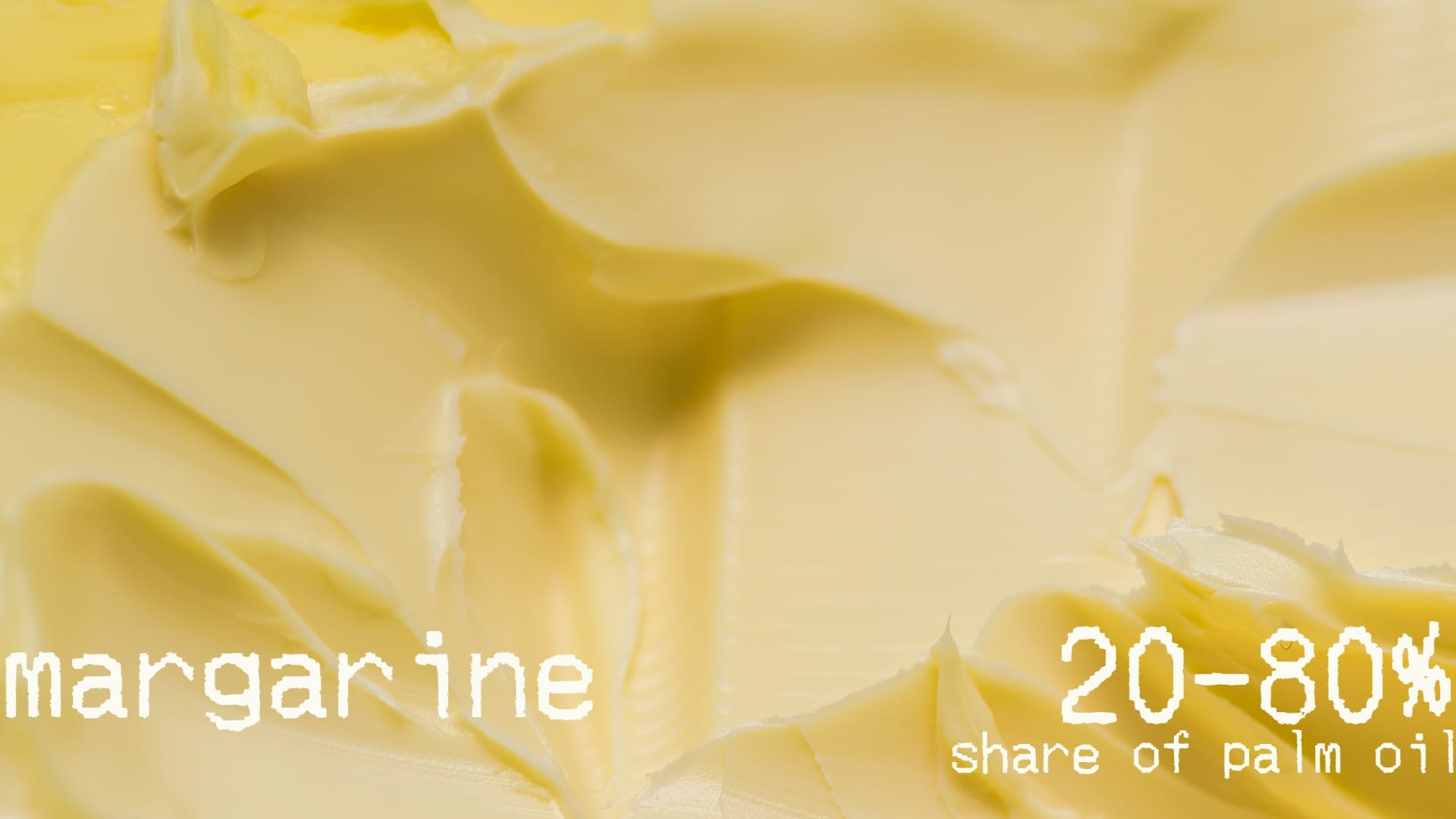Palmoel for thought.
The use of palm oil in the food and cosmetics industry offers many economic advantages, but is controversial in relation to the far-reaching environmental and social problems caused by its production.
Vegetable oils – production volume vs. yield per hectare

Oil palms are grown on 30 million hectares worldwide. The leading growing countries are Indonesia, Malaysia, Thailand, Colombia and Nigeria. This is due to the optimal climatic growing conditions around the equator. However, there are also many forests and rainforests there. The cultivation of oil palms is partly responsible for the fact that forests are being cut down and huge monocultures have been created. However, the palm oil palm is the most productive and cost-effective option for meeting the global demand for vegetable oils. The yield per hectare is higher than that of any other oilseed.
If the demand for vegetable oils were to be met by growing a different oilseed, much larger areas of land would be required. Soy is the world’s second most cultivated plant for oil production. However, soy has a very low yield per hectare. In our infographic, we compare the ratio of the four most commonly grown oilseeds.
Versatile use
Palm oil has another advantage. It can be used in a variety of ways for food and other products such as candles or cosmetics. As a foodstuff, it has particularly good melting properties and is virtually colorless and tasteless. The refining of vegetable oils poses a health problem. Heating and cleaning can produce harmful compounds that can break down in the body when consumed. The concentration of palm oil is particularly high. Cold-pressed and carefully processed oils pose a significantly lower risk. However, unpurified palm oil has a reddish color, which is not desirable in many foods.
Palm oil content in various food groups (2016):
It is estimated that palm oil can be found in every second supermarket product. But in the EU in particular, it is also used for e-fuels as a supposedly environmentally friendly alternative. However, it is not suitable for this purpose. The use is uneconomical and the emissions are very high. Most of the palm oil supplied to Germany is used as fuel. A reduction would make sense here in order to use the oil more as a foodstuff, where it has clear advantages in comparison.
Overall, the use of vegetable oils should be reduced in the long term and attention should be paid to sustainable cultivation and careful production. According to current demand, palm oil is the most sensible oil because of its particularly high yield per hectare (as long as it is used for a suitable purpose).
More from our Food for Thought category:
How much oil and fat does a person in Germany consume and what are the recommended amounts?
Sources:
https://de.statista.com/statistik/daten/studie/443045/umfrage/produktion-von-palmoel-weltweit
https://de.statista.com/statistik/daten/studie/442856/umfrage/produktion-von-sojaoel-weltweit/
https://de.statista.com/statistik/daten/studie/443315/umfrage/produktion-von-rapsoel-weltweit/
https://de.statista.com/statistik/daten/studie/443352/umfrage/produktion-von-sonnenblumenoel-weltweit/
https://de.statista.com/statistik/daten/studie/1176512/umfrage/ernteertrag-von-palmfruechten-weltweit/
https://de.statista.com/statistik/daten/studie/1142573/umfrage/hektarertrag-von-sojabohnen-in-europa/
https://de.statista.com/statistik/daten/studie/28924/umfrage/hektarertraege-von-sonnenblumen-seit-1995/
https://www.bmel-statistik.de/landwirtschaft/ernte-und-qualitaet/winterrapsernte
https://ourworldindata.org/palm-oil
https://ourworldindata.org/grapher/land-use-palm-oil?tab=chart
https://www.global2000.at/presse/neuer-palm%C3%B6l-report-und-gro%C3%9Fer-kekse-check-von-global-2000-und-s%C3%BCdwind
https://www.aok.de/pk/magazin/ernaehrung/lebensmittel/was-sie-ueber-palmoel-wissen-sollten/
https://www.codecheck.info/news/In-diesen-Produkten-steckt-das-Fett-der-Oelpalme-450357
https://www.foodunfolded.com/de/artikel/wie-palmoel-hergestellt-wird
https://www.quarks.de/umwelt/darum-bringt-ein-verzicht-auf-palmoel-nichts/
And what about the world’s agricultural land? How much land do we need for food production?















